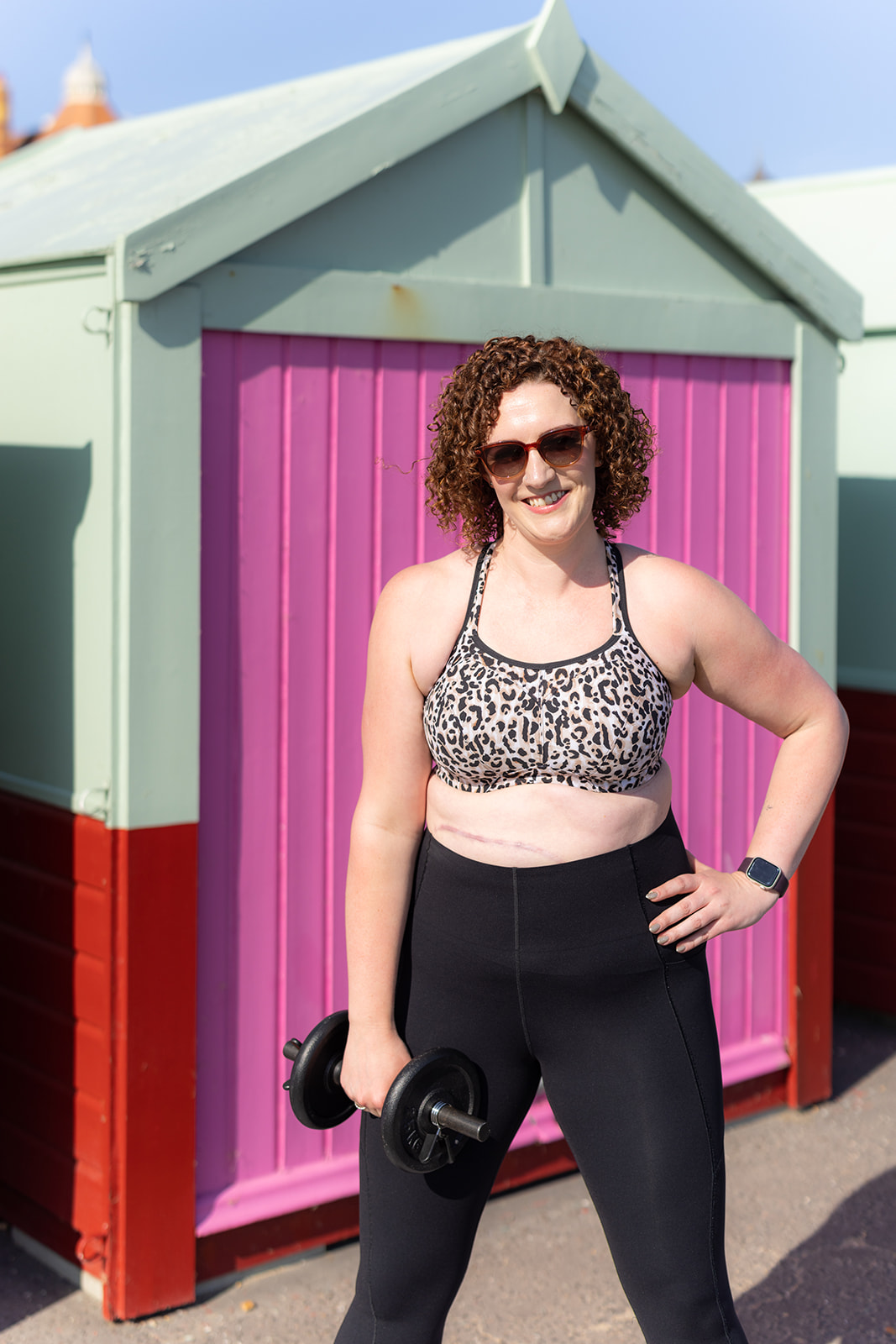One of the questions I get asked most often as a cancer specialist personal trainer is how patients should get back into exercise post-treatment.
The impacts of cancer treatments such as chemotherapy, radiotherapy, and surgery can last a long time, and getting back to fitness may seem impossible. I first qualified as a cancer specialist having been through surgery to remove a sarcoma. When I was diagnosed, I wasn’t a personal trainer, but I had recently fallen in love with strength training, so getting back to that and my other favourite hobby – horse riding – was very important to me. My then-personal trainer wasn’t a specialist, so we used our common sense and took things slowly. Here’s what I’ve learned since…
Exercising after cancer treatment
Recently, I attended a wellbeing marketplace event at East Surrey Hospital’s Macmillan Centre, and the question I was asked most often was how to get back to exercise post-treatment. Lots of patients reported feeling incredibly fatigued, and missed their previous energy and fitness levels. Recovering from this feels like it will be hard to achieve, but it is manageable.
The answer is both straightforward and I can only apologise for it also being boring: slow and steady wins the race.
Break the goal down
My biggest piece of advice is to expect very little of yourself, which can be particularly hard if you did a lot of exercise prior to treatment.
No matter the reason why, if you’ve had to take time out from exercise, one of the biggest favours you can do yourself is to lower your expectations. When you’ve been very inactive, it takes time to build back up. Whatever your current maximum is – and that may be five minutes of walking – aim for a small increase; even one more minute is an accomplishment.
Prepare for progression
Remember to notice when things are getting easier – that’s your sign to push forward a little more. Add another few minutes to your session, or tackle some new exercises.
With stamina being a key concern, you may want to ask someone to go with you when venturing out away from home initially. The first walk I went on after surgery, I took my Mum with me (it gave her peace of mind too!). Once I knew that I could get around with her by my side, but not actively helping me, I was confident to go by myself. It may also reassure you to tell someone where you’re going and when to roughly expect you back initially.
Monitor any changes
Hopefully, progress will be gradual but positive. Unless you’ve been told to avoid a specific activity, you will be safe to try most things, and it’s a case of building back up. It’s worth continuing with any mobility or physio exercises you’ve been taught, as residual stiffness or limited range of motion can linger following treatment, and it tends to be a case of regularly practicing these movements until you feel they are no longer needed.
If you experience any unexpected difficulties, pain, or regression in your ability, it’s worth talking to your medical team to check that there’s nothing untoward going on. Always take the advice of your doctor above any other professional.
You are an individual
We all progress at different rates, and although we undertake similar activities, our bodies respond differently. It’s important not to compare yourself even to those who have had the same cancer type or treatment as you. It’s rare that we know exactly how someone else has found their journey, so it’s unfair to yourself to compare without knowing all of the information.
It’s ok to take breaks during exercise, and stop when you feel that you might have done enough for that particular session. Whilst we no longer advocate for full rest until you feel healed and recovered, it is important to allow your body to recover between exercise sessions, so make sure that you schedule your training with rest days in between.
Exercise takes many forms – walking and running are far from the only things that we consider important. It may be that you start reconnecting with exercise via breathwork and stretching, before moving on to things like resistance training.
If you would like further support or information, please get in touch and I will be happy to help
